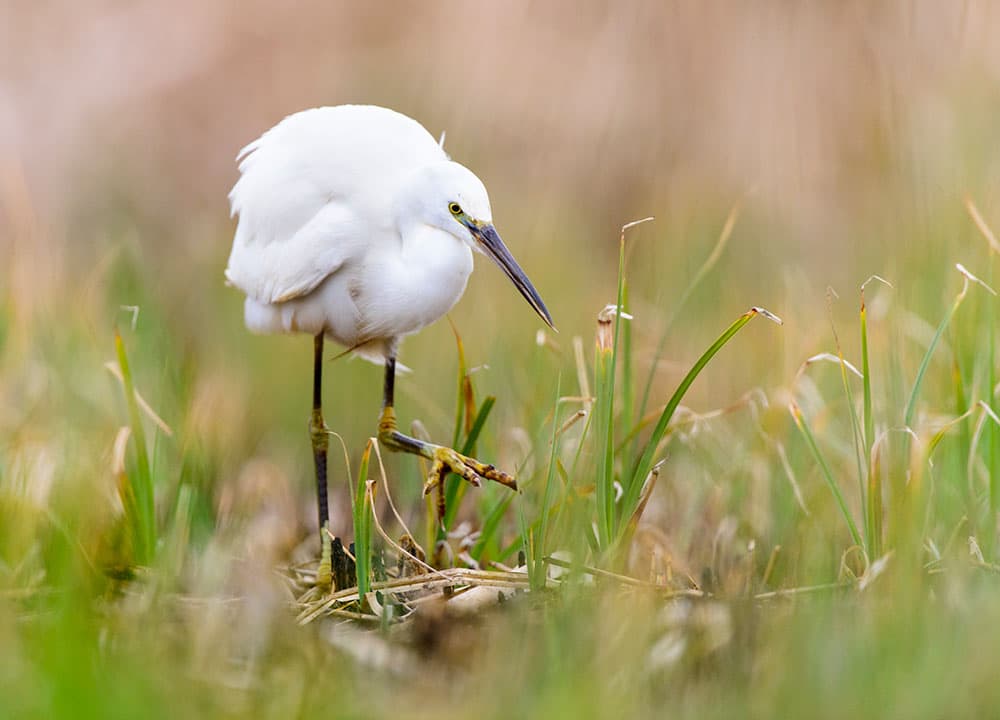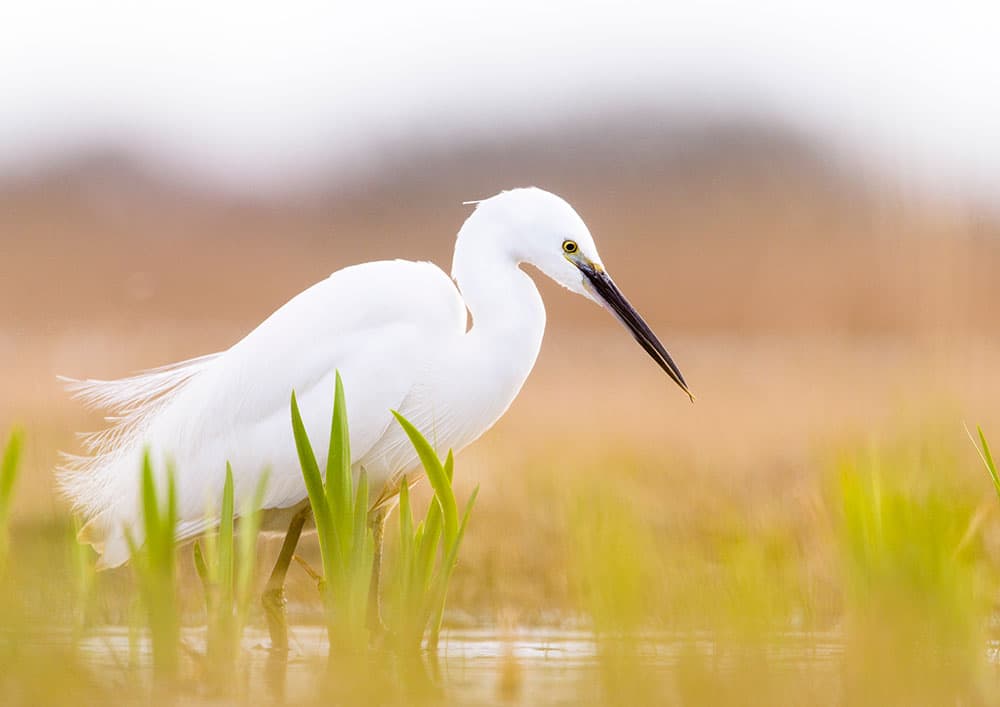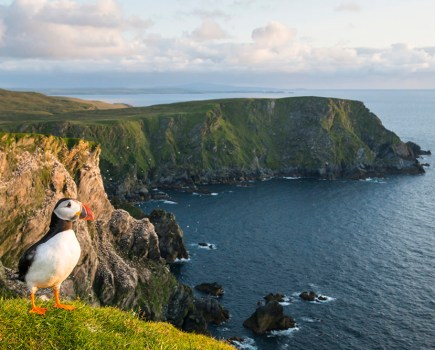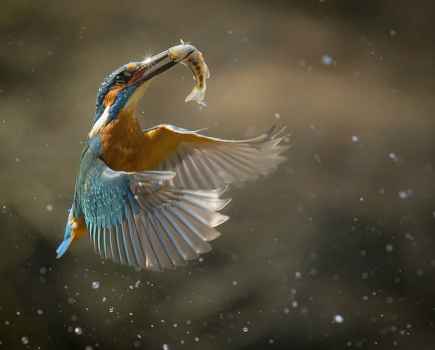About little egrets
Little egrets have a very similar behaviour and structure to the more familiar grey heron. Their elegant plumage and striking dark bill make them popular photographic subjects.
- Location Found across large parts of Britain, other than the north and Scotland. Most common on south and east coasts.
- Size Length 55-65cm; 88-106cm wingspan.
- Nesting A platform of sticks built in a tree, bush or sometimes a reed bed.
- Diet Mainly fish, but it can also include invertebrates such as crustaceans and molluscs. Occasionally it includes amphibians,
small reptiles, mammals and birds. - Population Around 700 breeding pairs, with about 4,500 birds wintering, and many of these will hang around in the summer as non-breeding birds.
Little egrets are a fairly recent colonist to the UK, only breeding for the first time in 1996. In Europe in the 1950s they were largely restricted to the south, but since reaching the UK they have spread rapidly, gradually moving northwards.
Habitat
You can find these birds across a variety of fresh and saltwater habitats, including lake shores, rivers, ponds, reed beds, flooded fields, wetlands and marshes. Their colour makes them easy to spot as they daintily pick their way through mud or water, pausing to feed on invertebrates. You can also see them poised, waiting to strike for fish beneath the surface. Good places to find them include the Suffolk and Norfolk coasts, and areas along the south coast such as Poole and Chichester harbours.

While moving through the reeds as it fished, this little egret stepped onto some roots, revealing its yellow feet.
Best time to shoot
The white colour of their plumage makes it easy to mess up the exposure and leave yourself with blown highlights. For this reason, shooting when there is cloud cover, or when the sun is low in the sky, is easier – this way you can pick up the fine detail in their feathers. The best times for this are in the hours just after sunrise and just before sunset. This period also coincides with their greatest activity, so it’s well worth making the effort. Shooting when the sun is low also gives you the chance to experiment with different lighting such as backlighting, resulting in images that are a bit different.
Shooting advice
Little egrets are always active when feeding, so use continuous AF. Manual exposure is useful for getting the correct exposure, especially if the light remains constant. I use single spot focus in order to get a precise focus on the bird’s eye. Have your frame rate set to its highest to maximise the chance of catching little egrets as they plunge their beaks into the water, or spread their wings and take off.
Little egrets are spreading, covering more of the UK every year. When they first arrived from continental Europe they could only be found in the south, but now they have reached as far as the coast on the North East of England. They are common along the south and east coasts, where they can be spotted in most areas of marshland and wetland.
Additionally, many of the little egrets that spend all year in the UK are non-breeding birds. Check coastal areas and estuaries, too, as they will often feed here. These birds can be wary, so patience is required. Many of my photographs of little egrets are taken at nature reserves from hides, where they are more accustomed to noise. This makes it hard to shoot from a low angle, however, which gives more intimate images. If you know of a regular feeding area, stake it out and wait. This may be unrewarding while nothing shows up, but will be well worth it when you can photograph them at water level in early morning light.
It’s possible to capture a range of images: the birds look very elegant just standing still, but there are also options to capture them being active, such as fishing or in flight. Being white, they also give you the opportunity to get some high-key images if the light is flat. Experimenting with different sorts of images is always interesting, once you’ve got the bog- standard ones in the bag.

Shooting from water level makes you feel as if you are in the water with the bird, rather than looking down on it.
Kit list
Tripod
Telephoto lenses are often heavy, and a tripod makes steadying them much easier. You also don’t need to stand holding your lens while you are waiting. If possible, use one without a central column so that you can get the camera as near to ground level as possible.
Binoculars
Whenever I’m shooting, I always have my binoculars with me. They are much brighter than looking through a camera lens so they make it easier to spot your subject. They also weigh significantly less!
Waterproof trousers
You can find little egrets in fresh and saltwater habitats, but getting a low-level shot often requires sitting or laying on damp ground. As such, a pair of waterproof trousers is a must. Make sure they are durable, well-vented for good temperature control, and preferably contoured to aid movement and improve comfort.
Oscar Dewhurst is an award-winning wildlife photographer. He has spent the last few years dedicating countless hours to photographing bitterns, and photographs many other species, from urban foxes to primates in the Peruvian Amazon. Visit www.oscardewhurst.com.







